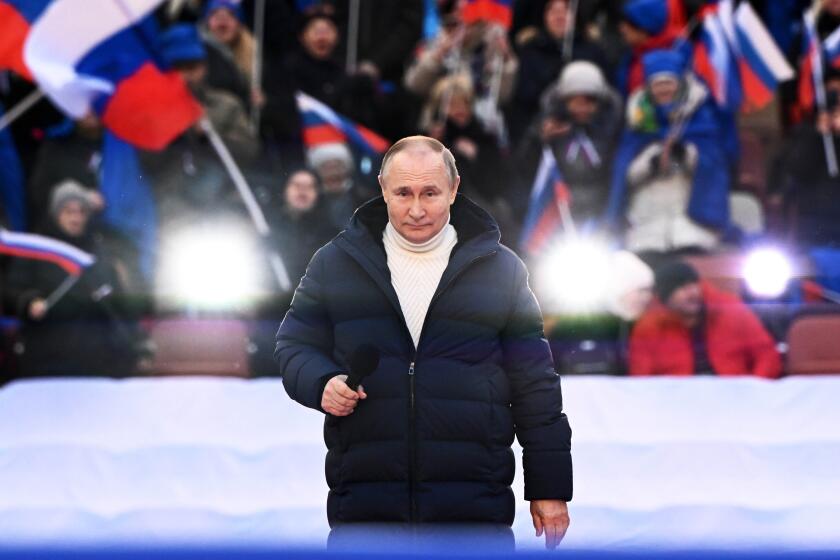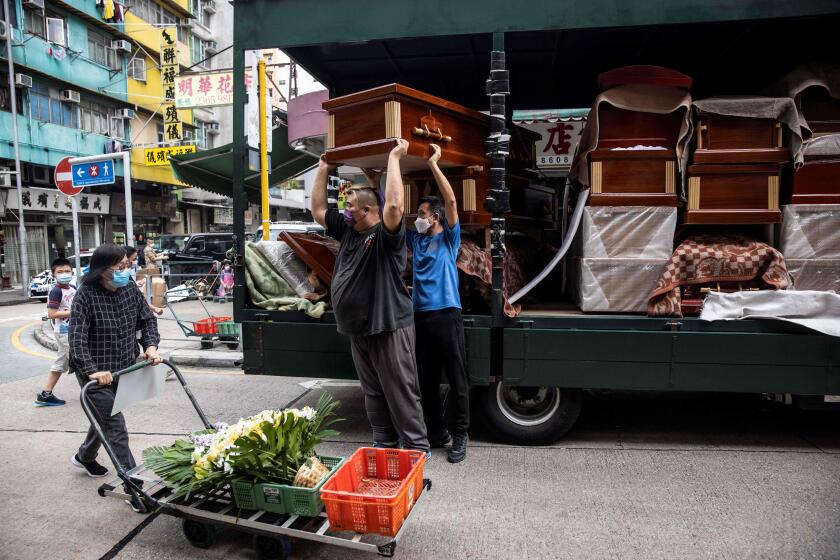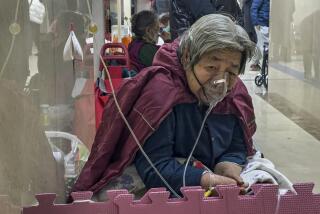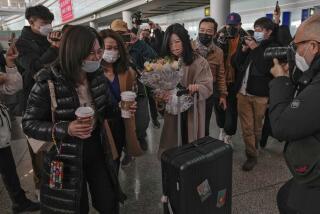Shanghai begins China’s biggest COVID-19 lockdown in two years
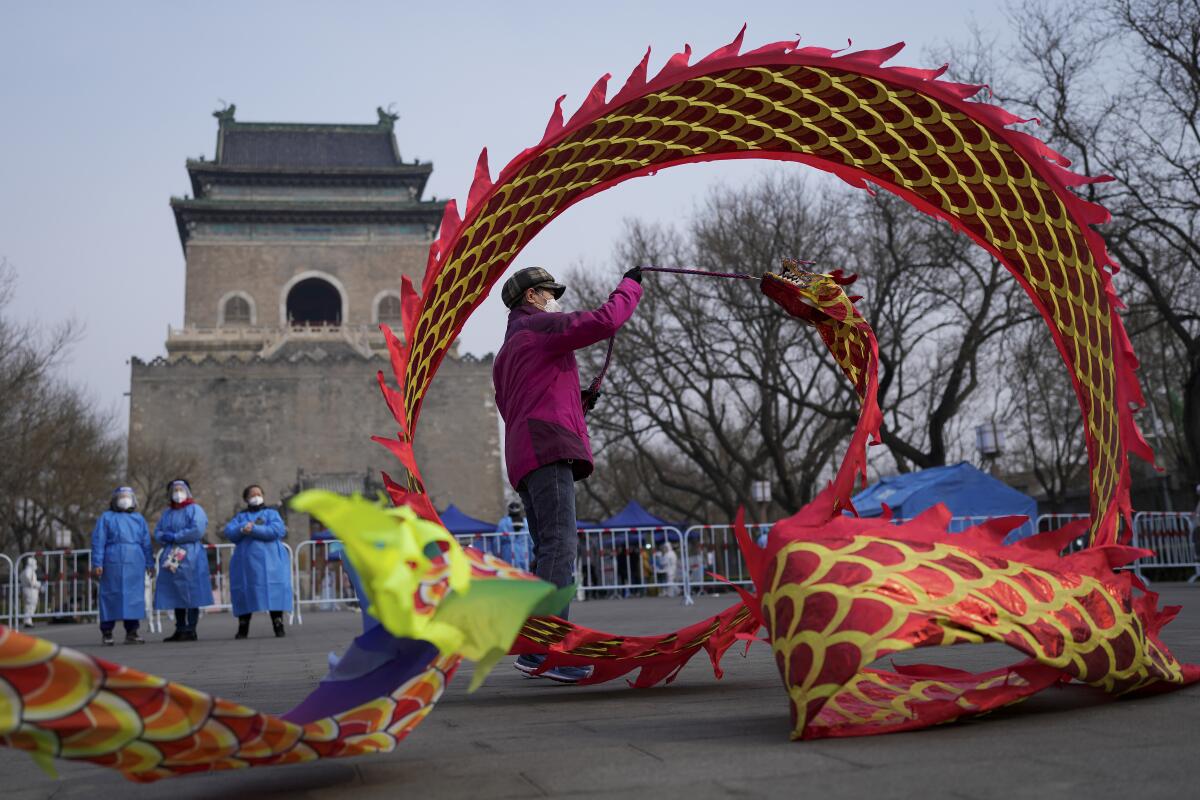
- Share via
BEIJING — China began its most extensive lockdown in two years Monday to conduct mass coronavirus testing and control a growing outbreak in Shanghai as questions grow over the economic toll of the nation’s “zero-tolerance” COVID-19 strategy.
China’s financial capital and largest city with 26 million people, Shanghai had managed its smaller previous outbreaks with limited lockdowns of housing compounds and workplaces where the coronavirus was spreading. But the citywide lockdown to be conducted in two phases will be China’s most extensive since the central city of Wuhan, where the coronavirus was first detected in late 2019, confined its 11 million people to their homes for 76 days in early 2020.
Shanghai’s Pudong financial district and nearby areas will be locked down from early Monday to Friday as citywide mass testing gets underway, the local government said. In the second phase of the lockdown, the vast downtown area west of the Huangpu River that divides the city will start its own five-day lockdown Friday.
Residents will be required to stay home and deliveries will be left at checkpoints to ensure there is no contact with the outside world. Offices and all businesses not considered essential will be closed and public transportation suspended.
Already, many communities within the city have been locked down over the last week, with their housing compounds blocked off with blue and yellow plastic barriers and residents required to submit to multiple coronavirus tests. Shanghai Disneyland is among the businesses that were closed. Automaker Tesla is also suspending production at its Shanghai plant, according to media reports.
U.S. officials scrambled to make clear that despite President Biden’s off-the-cuff condemnation of Russian President Vladimir Putin, regime change in Moscow is not on Washington’s agenda.
Panic-buying was reported Sunday, with supermarket shelves cleared of food, beverages and household items. Additional barriers were being erected in neighborhoods Monday, with workers in protective suits staffing checkpoints. In-person observation of China’s annual Tomb Sweeping Festival on April 5 has been canceled, and memorials will instead be held online.
Huang Qi, 35, who works at a local university, said he had undergone lockdown before and prepared for the new round by stocking up.
“I think if the closure continues like this, our school workers will not be affected much, but what about those who work in the real economy? How can their business be maintained?” Huang said, adding: “I still hope that our society can find a better balance between ensuring normal life and epidemic prevention and control.”
Shanghai detected an additional 3,500 cases of infection Sunday, though all but 50 were in people who were asymptomatic. Although people who are asymptomatic can still infect others, China categorizes such cases separately from “confirmed cases” — people who are sick with COVID-19 — leading to much lower totals in daily reports.
Outbreaks in Hong Kong and mainland China are testing the limits of a zero-tolerance COVID-19 policy.
Nationwide, 1,219 new confirmed cases from community infection were detected Sunday, more than 1,000 of them in the northeastern province of Jilin, along with 4,996 asymptomatic cases, the National Health Commission said Monday.
Two deaths were reported March 19 in Jilin. Before that, mainland China’s official death toll had stood at 4,636 for a year.
China has reported more than 56,000 infections nationwide this month, with the surge in Jilin accounting for most of them.
Beijing has continued to enforce what it calls the “dynamic zero-COVID” approach, calling that the most economical and effective prevention strategy against COVID-19.
The new measures being enforced in Shanghai aim to “curb the virus spread, protect people’s life and health, and achieve the dynamic zero-COVID target as soon as possible,” the city’s COVID-19 prevention and control office stated in an announcement Sunday evening.
Breaking News
Get breaking news, investigations, analysis and more signature journalism from the Los Angeles Times in your inbox.
You may occasionally receive promotional content from the Los Angeles Times.
That requires lockdowns and mass testing, with close contacts often being quarantined at home or in a central government facility. The strategy focuses on eradicating community transmission of the virus as quickly as possible, sometimes by locking down entire cities.
Although national leaders, including President Xi Jinping, have encouraged more targeted measures, local officials tend to take a more extreme approach, concerned with being fired or otherwise punished over accusations of failing to prevent outbreaks.
Shanghai’s announcement of the dates when the two lockdowns would be lifted appeared to show a further refinement of China’s approach. Previous citywide lockdowns had been open-ended.
Though China’s vaccination rate stands at about 87%, it is considerably lower among older people.
Starting Thursday, gatherings on private premises of more than two families will be banned in Hong Kong, among other tough new COVID-19 restrictions.
In Hong Kong, Chief Executive Carrie Lam said the government was still considering next steps in what has been criticized as a halting response to a recent fifth wave of infections that has led to tens of thousands of cases and more than 7,000 deaths.
Lam said no decision has been made on whether or when to test all 7.4 million of the city’s residents.
“I don’t have a timetable yet. It’s not easy to pre-determine a timetable, in the same way that I don’t know how quickly the cases will come down,” Lam told reporters at a daily briefing.
More to Read
Sign up for Essential California
The most important California stories and recommendations in your inbox every morning.
You may occasionally receive promotional content from the Los Angeles Times.
